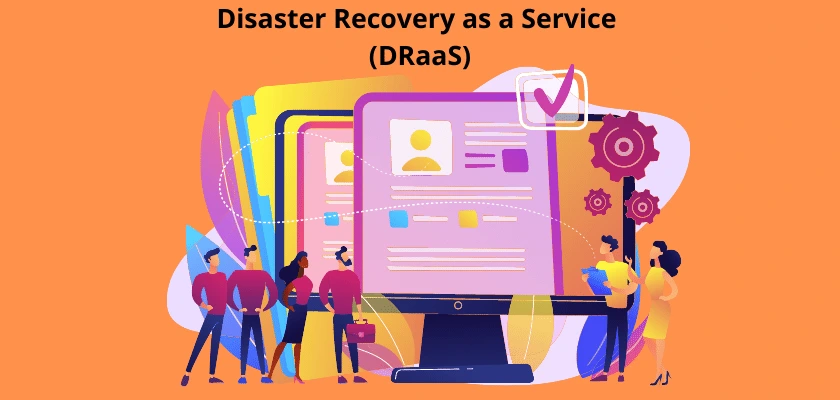
Technology has made our lives so much easier. Now, managing and saving information is easier than ever. Disaster Recovery as a Service also known as DRaaS has become an essential storage solution today. In the older times, businesses used to manage handwritten data and information. Creating backups and copies was very difficult, and lost data was mostly lost forever.
As things have become more valuable today, they have also become more vulnerable to damage, as an issue with a system can make your whole data be wiped out. This is the point where technology amazingly helps with respect to Disaster Recovery as a Service. This holds high importance for businesses today, and here we will be discussing everything that you need to know about Disaster Recovery as a Service (DRaaS).
What is Disaster Recovery as a Service (DRaaS)?
Disaster Recovery as a Service is a cloud service that allows for reliable and secure handling of your data. The third-party service provider you select for a Disaster Recovery as a Service (DRaaS) solution will replicate and store your data in the cloud.
So, if your system crashes and the data becomes unavailable, this backed-up data will become the solution for restoration. It brings a lot of advantages that make your life so peaceful and convenient.
What is the importance of Disaster Recovery as a Service?
Getting Disaster Recovery as a Service (DRaaS) has become very important because most businesses cannot function normally without their data, even for a minute. So, Disaster Recovery as a Service (DRaaS) enables any business to stay functioning, normally, even when a disaster happens at their end. Its automatic functioning capabilities ensure that no downtime is to be faced, making everything seamless.
Furthermore, Disaster Recovery as a Service (DRaaS) brings several benefits for a business, including a better data protection plan which means better reliability as well a competitive advantage in the market. Disaster Recovery as a Service (DRaaS) is also better when it comes to the cost of disaster recovery services, and it is a flexible service. It means that you can get the services right according to your requirements.
The 10 Best Disaster Recovery as a Service (DRaaS) Companies
There are a lot of companies that provide Disaster Recovery as a Service. However, when selecting the one, you need to be sure that you are selecting the right choice to get the best experience. So, here we have enlisted ten of the best Disaster Recovery as a Service providing companies for you.
Microsoft Azure

Microsoft is a huge name in the technology world, and Microsoft Azure provides the best Disaster Recovery as a Service (DRaaS) solution for everyone. This site recovery platform provides automated recovery and disaster recovery services using cloud tech, making everything secure and always available for you.
These services make the perfect choice for you because you do not have to do anything manually. Its integration services make sure that your data is fully protected and that all of the communication between your end and Azure’s end is encrypted to provide the best security.
Pros:
(i) Replicates the whole IT environment so there will be no downtime in any case.
(ii) Perfect choice for any environment, whether running on a virtual machine or physical machine.
(ii) Getting onsite equipment is not necessary which means there are lesser things to manage.
Cons:
(i) You need IT-level knowledge to use it for all disaster recovery scenarios other than the simplest scenarios.
Zerto Disaster Recovery as a Service
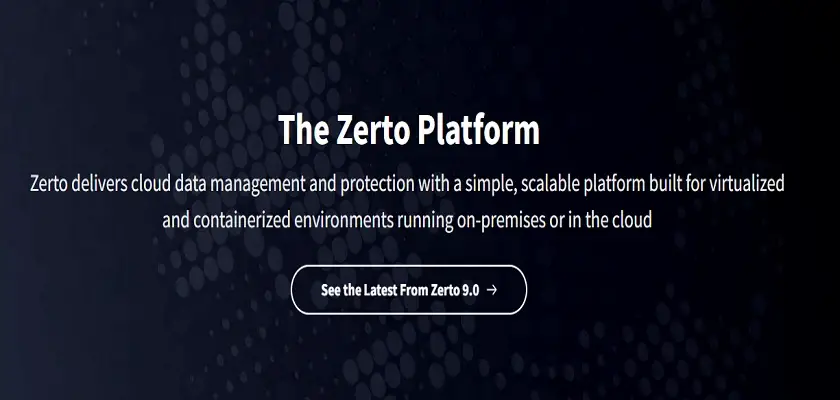
The next one on the list is Zerto, a sophisticated one in Disaster Recovery as a Service. Getting services here will mean that your cloud data storage prices will significantly drop because you will manage everything here.
One of the best things about it is that it automates the whole recovery process without caring about the hypervisor type or storage type, making it a perfect choice for everyone. The integration options you get from Zerto are amazing and can provide you with a lot of attractive features.
Pros:
(i) The interface is very easy to use.
(ii) You can select a variety of available cloud options.
(iii) Multiple integration options to use from a single cloud platform.
Cons:
(i) No protection for non-virtualized sources.
Arcserve UDP Cloud Direct
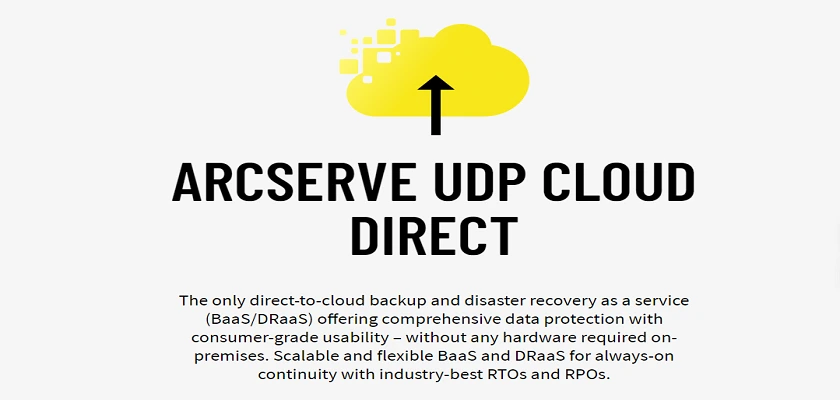
Arcserve is a company that has designed its services to meet all your enterprise-grade security and performance needs when it comes to Disaster Recovery as a Service (DRaaS). The recovery process is simple and quick. It also provides VPN access to the recovered environment.
It makes sure that your business can experience the best security protocols through total data encryption policies. So, when you are using it, there will be no need to worry about your data protection and you can still use everything, even in the case of a disaster.
Pros:
(i) VPN access is provided for free.
(ii) The interface is very simple and easy to use.
(ii) The “Push Button” recovery option makes everything quick and simple.
Cons:
(i) There are no integration options, meaning you might have to miss some additional functionalities you need.
Carbonite Disaster Recovery as a Service
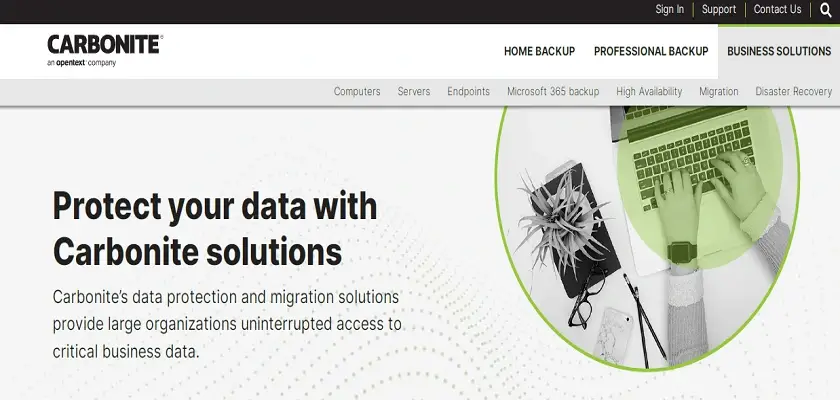
If you are looking for a service provider that makes things easier and simpler for you, then Carbonite is the answer to all your questions. It can provide recovery services not only for your files but also for the entire system within one click.
Carbonite comes with flexible features, ensuring that you get services according to your business needs. Another amazing thing about it is that it comes with the option where you can back up your data on the cloud or on local storage, or you can also use both at the same time.
Carbonite not only makes things easier in software terms, but it is highly feature-packed in terms of hardware capabilities.
Pros:
(i) Works with your system state and OS applications along with settings and files.
(ii) Allows you to create custom backup policies.
(iii) Provides a streamlined recovery process with only a few clicks.
Cons:
(i) The server restore process can take a long time.
Ekco Disaster Recovery as a Service
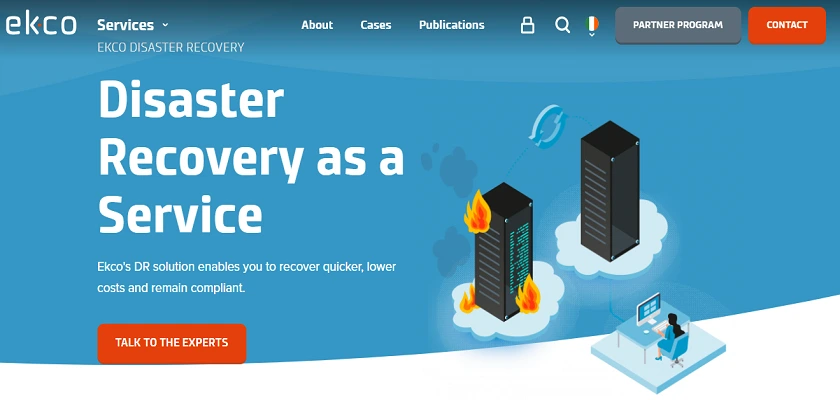
Next up on the list is Ekco Disaster Recovery, originally known as “Plan Disaster Recovery.” It provides amazing Disaster Recovery as a Service with its cloud-based solution, ensuring that everything stays under control in the case of a disaster or an outrage.
It provides instant recovery services with its amazingly designed software that also provides complete access to your backup system while the original files and services get the necessary repairs.
Pros:
(i) It provides you with the help of specialists in case you need any assistance.
(ii) Almost no downtime to face when using Ekco.
(iii) Secure VPN access ensures that you are safe by all means.
Cons:
(i) No information is available about their pricing, so you need to contact them.
CrashPlan Disaster Recovery as a Service
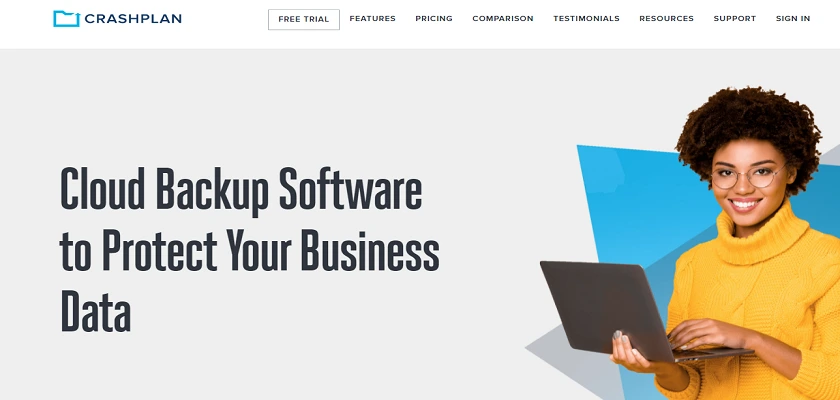
CrashPlan used to be an amazing platform offering backup solutions to home users. However, it is now one of the best choices to go for if you need Disaster Recovery as a Service (DRaaS) for small businesses. CrashPlan ensures to secure everything out there, ensuring that nothing is left out from the oldest to the newest files in the case of a disaster.
It takes everything from you and shifts them into the virtual buckets at its end. This allows you to access and use your files and data whenever and wherever you want or need to. One of the unique features that you get here is that deleted files are also restored.
Although it can be turned OFF, keeping it ON can bring some peace of mind that it is still safe in case of accidental deletion.
Pros:
(i) The pricing is kept competitive to make it a good choice for budget-friendly services.
(ii) Mobile access ensures that you get the services no matter which device you are on.
(iii) Fully encrypted backups ensure that there is no need to worry about security.
Cons:
(i) Your files are not backed up according to the file type.
Acronis
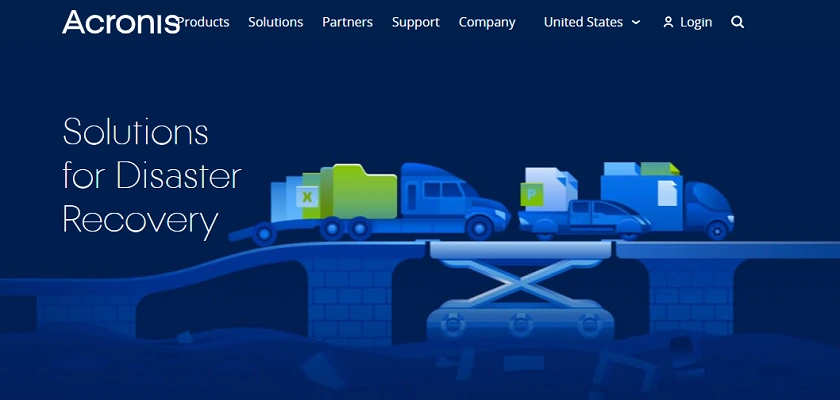
A plan or service that is perfect for someone’s business may not fulfill your requirements. Acronis is the company that understands this, so it allows you to select the services that fulfill your requirements in the right way.
In this way, you can get a Disaster Recovery as a Service plan that will not be lacking anything your business needs. Similarly, it will not be an overkill plan to pay for things you do not need.
All of these customization options make it a perfect option for any business of any size that needs amazing data protection and recovery features.
Pros:
(i) 24 hours worldwide support available.
(ii) Integration services are available with more than 50 options to go for.
(iii) Provides amazing cyber security services.
Cons:
(i) The user interface and the menu are not very user-friendly.
Quorum Disaster Recovery as a Service
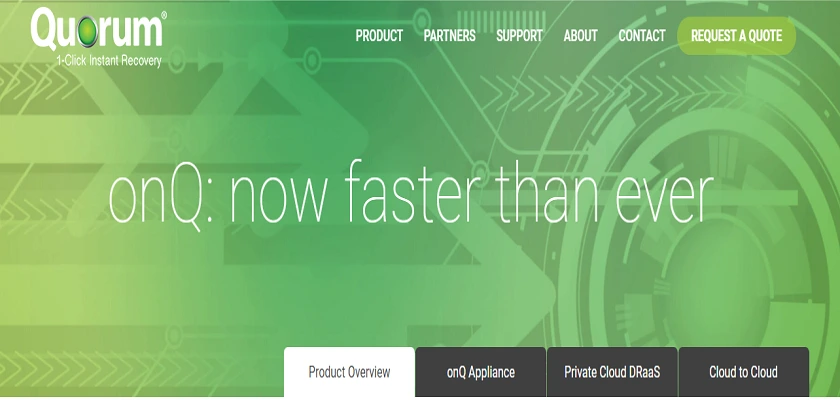
Quorum DRaaS provides Disaster Recovery as a Service where you do not need to mess with things in case of an outage. Do you need recovery? you only need to press one button, and you are good to go. These user-friendly features enable it to help businesses of all scales bring amazing solutions, especially for small businesses.
As all of the data is present on the cloud, you can recover from a disaster instantly with the help of your onsite equipment. The encryption and clone device features make it a very reliable Disaster Recovery as a Service provider.
Pros:
(i) Scalable services to meet the needs of every business.
(ii) The onsite hardware setting up process is pretty simple.
(iii) Sandbox environment enables testing before implementing new patches.
Cons:
(i) You need onsite equipment for instant data recovery.
IBM Disaster Recovery as a Service
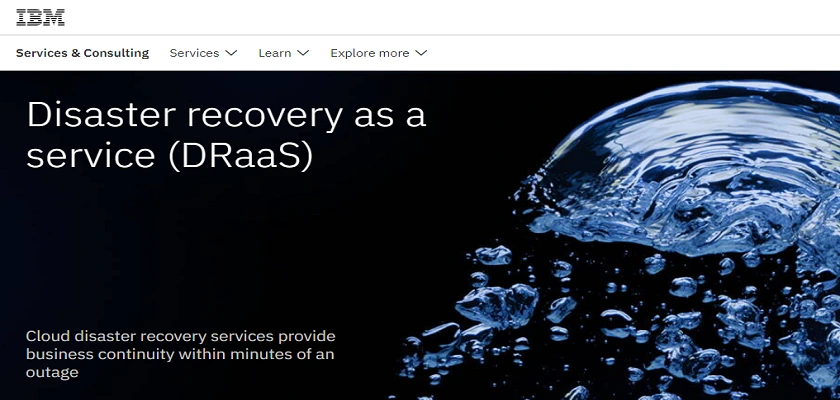
IBM is another huge name in the tech world, and it makes things safe and secure for businesses. It comes with its Disaster Recovery as a Service (DRaaS) solution. The interesting thing about this Disaster Recovery as a Service is that instead of only helping you with recoveries, it is designed to prevent disasters by monitoring your system.
Monitoring catches problems by keeping track of system health. Moreover, when you get to use it, you will observe that the recovery is as quick as it gets, making almost zero downtime for your system. Additionally, this automation service ensures that you will not have to hire a huge workforce to manage data recovery.
Pros:
(i) IBM Disaster Recovery as a Service provides you with RTO, and RPO reports within minutes.
(ii) Support and consultancy services are very much available.
(iii) Cloud-based backups are easy to create, restore, and use.
Cons:
(i) It needs you to get onsite equipment that can increase the Disaster Recovery as a Service (DRaaS) price for you.
Zetta Backup and Recovery
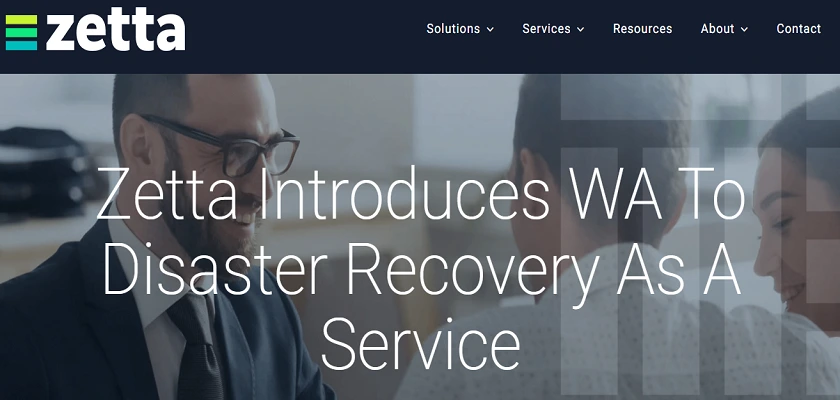
This is the last option that we have here for you, and Zetta offers a highly powerful as well as blazing-fast Disaster Recovery as a Service (DRaaS). The quality of its DRaaS is not the only thing being under focus as the prices are also set to be competitive.
It is amazing for businesses because of the continuity capabilities that allow businesses to manage things even more efficiently. While it brings amazing value with its list of features and benefits, there are some cons that you must consider as well.
Pros:
(i) Simple setup process without needing any IT-level knowledge.
(ii) Quick and efficient cloud-based backup.
(iii) There is no need for any onsite equipment for these services.
Cons:
(i) This company favors Windows environments for its Disaster Recovery as a Service.
How does Disaster Recovery as a Service work overall?
The working methodology of Disaster Recovery as a Service (DRaaS) is as simple as it gets. In simple words, things are stored in one place, and when you need them, you can get them from there. There are two main ways of storing data and files. One is online, where the data is stored in cloud-based systems. The other one is offline, where the data is stored in onsite equipment.
In the case of any natural disaster, your system may suffer from an outage. No business is ready to accept an outage, most businesses these days are based on digital systems. So, while the system gets the repairs that it needs, you can rely on the recovery that was backed up by your DRaaS provider.
In this way, there will hardly be a chance that you do not have access to your system, information, application, or files, ensuring that there is no downtime. As a simple downtime can bring huge damage to a business, using DRaaS brings better chances for the survival of a business in this competitive world.
Advantages of Disaster Recovery as a Service (DRaaS)
Getting Disaster Recovery as a Service (DRaaS) brings several advantages for your business. Here are some of them elaborated in detail:
(i) Managing your backups on personal storage can be very unreliable. Disaster Recovery as a Service (DRaaS) ensures that your backups are budget-friendly as well as come with amazing reliability.
(ii) A Disaster Recovery as a Service (DRaaS) company ensures to provide the best value to all of their customers with the help of foolproof security. So, encryption helps a lot in this case, and you can be sure that your data is safe from all sorts of attackers and cybercriminals.
(iii) Most of the service providers these days ensure that the recovery process is made as quick as possible. In this way, you can be sure that there is no downtime to face, bringing significant benefits for your business in case of a disaster.
There is no need to manage an IT team for disaster recovery. All of the staff will be managed by the Disaster Recovery as a Service provider, so you do not need to worry about anything.
Things to consider when you start using Disaster Recovery as a Service
When selecting any of the Disaster Recovery as a Service (DRaaS) providers, there are some specific things that you need to check. Checking all of these will make sure that you select a Disaster Recovery as a Service provider that brings the best experience.
Security measures
The first requirement to check is the level of security. This is because you need your data to be secure and safe by all means. So, checking for providers with better encryption makes you enjoy more reliability. Also, things like authentication methods add more value.
Bandwidth
Uploading and downloading your data will require you to have a specific bandwidth for the services. It will enhance the experience but also change the prices. So, make sure to get the services that provide the best plan for your needs without overkilling or lacking anything.
Restoration process needs
The last thing is the restoration process and its experience. What will be your priorities regarding data restoration, and how quickly do you want things to be good again? All of these matter a lot.
How much data can you store when you get a Disaster Recovery as a Service?
It depends on the service provider and the package/hardware allocation that you get.
How long should the restoration process take?
It depends on different things. The onsite equipment provides the quickest recovery. Cloud-based systems need some time, and it depends on bandwidth.
Do you need to store everything when getting DRaaS?
No, it is not worth it to store all of the files and data. You only need to store the critical ones.
Final Remarks
Operating without Disaster Recovery as a Service (DRaaS) means that you are taking a huge risk with the survival of your business. Not keeping backups mean that once something is lost, it is gone forever, and you have to start all over again.
Even managing an onsite personal Disaster Recovery setup is not an efficient choice for most businesses. So, when you are selecting a service provider for your business, make sure to keep track of all the important things for an amazing experience.
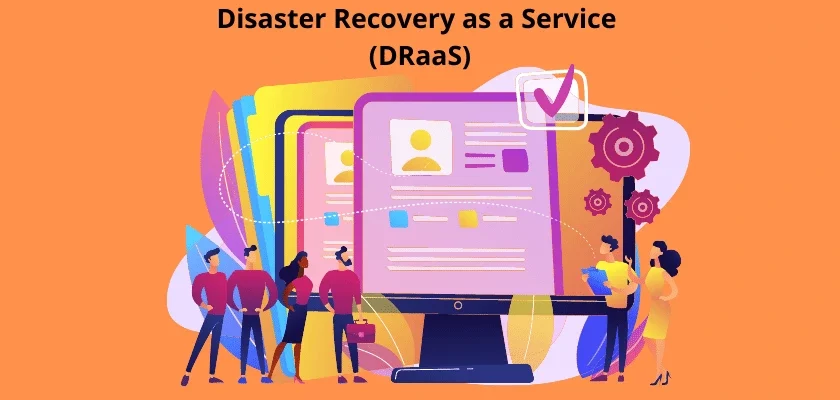
Found this helpful.